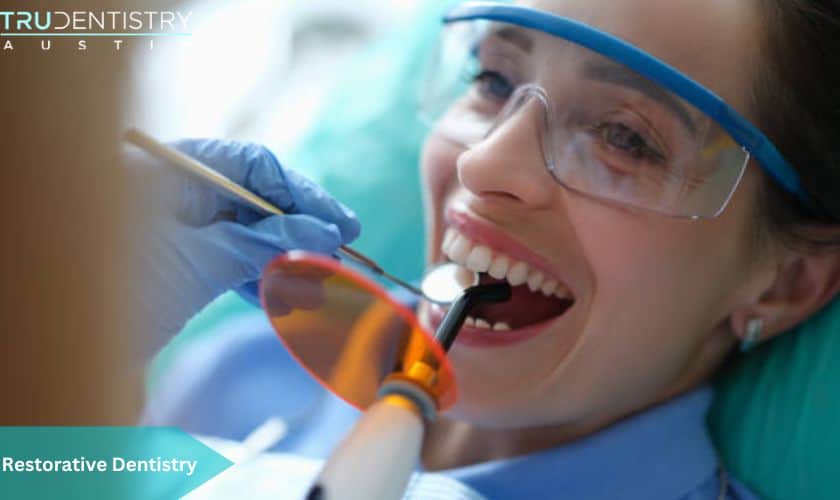Having the perfect set of teeth is essential not only for your appearance but also for your oral health. Healthy and straight teeth help you chew and speak correctly, which impacts your digestive health.
What Is Restorative Dentistry?
Restorative Dentistry Focuses On Repairing Or Replacing damaged or missing teeth. It helps improve the tooth’s function and appearance and solves various oral health problems. You might need restorative dentistry treatments if you have the following:
- Cavities/tooth decay.
- Missing teeth.
- Damaged or broken teeth.
What Are The Types Of Dental Restoration?
The different types of dental restoration procedures are:
Dental Fillings
Dental fillings repair teeth that have developed cavities or holes. Metal, porcelain, and resin are used to make tooth-colored composite fillings. Fillings are also used to repair broken teeth. The dentist will clean the decayed tooth before performing the procedure. If the tooth is properly cared for after treatment, these fillings can last for five to twelve years. It would help if you practiced good oral hygiene to avoid future problems.
Dental Crowns
Dental crowns help to restore the size, shape, and strength of a broken tooth. The crowns look like the missing tooth. A dental crown is used to cover a broken or decaying tooth. It is made of a clear shell filled with composite material that is eligible for oral use. After the material has hardened, the shell is removed, leaving the crown in place. Children are given dental crowns to protect their developing teeth from further damage.
Inlays & Onlays
Sometimes a cavity is too large for a filling but too small for a crown. In this case, the dentist may recommend an inlay or onlay. These custom restorations fit perfectly into your natural tooth structure. Your dentist will permanently cement them in place.
Inlays and onlays are similar. An inlay fills the space between your teeth’s cusps, whereas an onlay covers at least one.
Dental Bridges
Dental bridges replace one or more missing teeth. It consists of an artificial tooth with dental crowns on each side. The teeth are shaped to hold the bridge. A dental bridge looks the same as your natural tooth in shape and color. It functions like your natural tooth too. A dental bridge can last 5 to 10 years if you maintain it with good oral hygiene.
Dental Implants
A dental implant is a titanium screw that replaces a tooth root. This screw is inserted into your gums to help hold a dental crown. Dental implants make the gums and jaws look better. They provide a stable foundation for crowns or bridges. Unlike many dental restorative procedures, implants do not require modification of your natural tooth.
Dentures
Dentures are a traditional tooth restoration option. There are two types of dentures: full and partial. Full dentures replace an entire arch of missing teeth, whereas partial dentures replace only the missing teeth.
You can also get implant-supported dentures, which are similar to dental implants. Implant-supported dentures provide more stability to your gums and jaw than traditional removable dentures. It requires two dental implants on either side of your upper or lower gums.
Root Canal Therapy
Root canal therapy removes the infected tooth pulp, including the nerves and blood vessels. The dentist thoroughly cleans and disinfects the inside of the tooth. They fill the tooth with a composite material to prevent infection and bacteria accumulation. Dentists perform this procedure when necessary, and there is no other option to save the tooth.
What Are The Advantages Of Restorative Dentistry?
Restorative dentistry offers a wide range of benefits for people of all ages. Some of them are:
- Restore oral health.
- Improve chewing and biting.
- Eliminate dental pain.
- Reduce the risk of dental issues in the future.
- Improve the appearance of your smile.
What Are The Risks Of Restorative Dentistry?
Restorative dentistry is performed to improve the functions of teeth and gums. The risks of these treatments are minor and often curable. The patient might experience sensitivity and pain after a procedure. They might also feel discomfort for some days following the surgery.
The Bottom Line
The main goal of any restorative dental procedure is to repair damaged teeth and replace a missing tooth. Undergoing dental procedures can be a scary experience, especially if you have never had one before. i=It is better to treat dental problems as soon as you suspect them. Waiting too long might result in tooth extraction or other oral issues.
